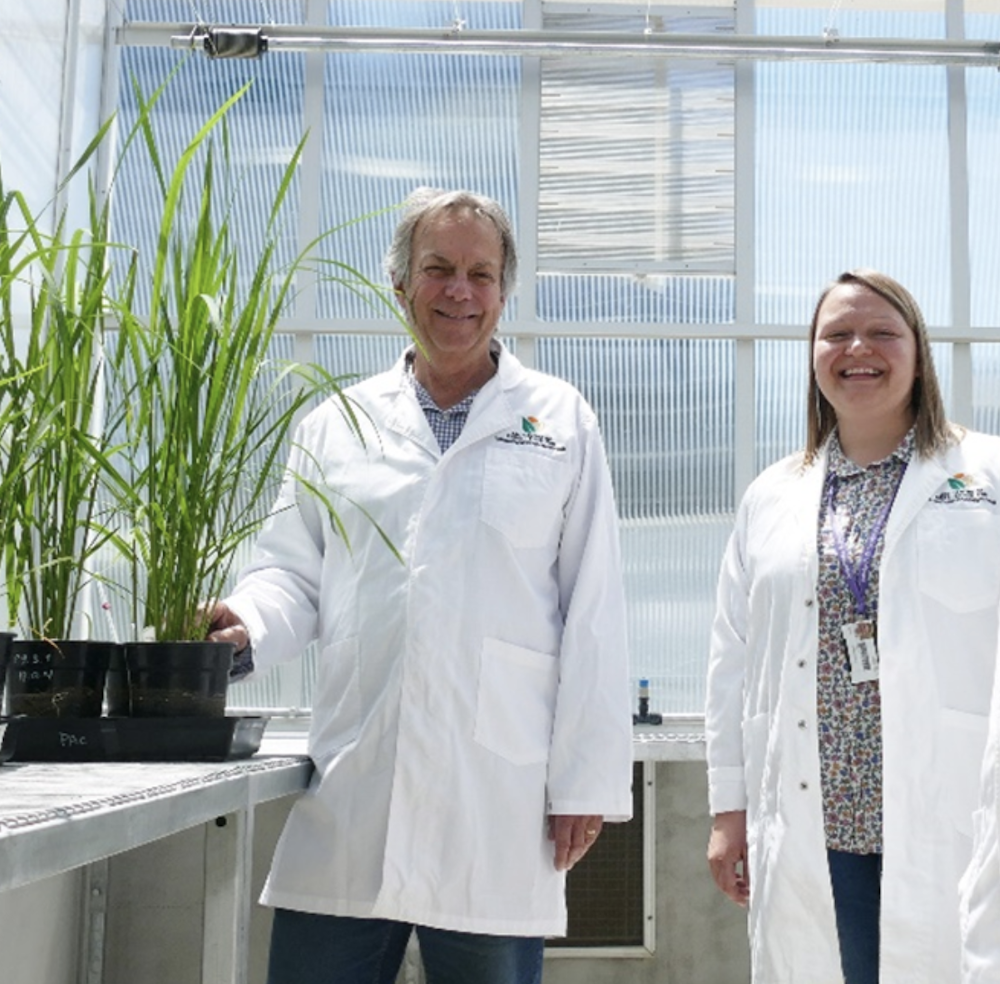Overexpressing Rieske FeS in Transgenic Sorghum Crops Results in Greater Biomass and Grain Production
C4 grasses, like sorghum and the millet Setaria viridis, have high carbon dioxide assimilation rates due to the use of a biochemical carbon-concentrating mechanism. This greater efficiency of carboxylation by Rubisco, the main enzyme of CO2 fixation, results in increased biomass production and better radiation-use-efficiency than C3 plants in warm climates. However, the C4 cycle is slow under conditions of low irradiance and consequently there is a decrease in efficiency of C4 photosynthesis. Increasing radiation-use-efficiency is thought to be a potential pathway for increasing the assimilation rates and productivity of C4 plants. In fact, crop model predictions for sorghum show the potential for a 3.3% to 9.2% increase in yield through improvement of photosynthesis (Wu et al., 2019). Previous studies have shown that, in Setaria viridis, overexpressing the Rieske FeS subunit of the Cytochrome b6f complex increases the rate of photosynthetic electron transport and stimulates CO2 assimilation (Ermakova et al., 2019). In an effort to test whether productivity of C4 crops could be improved by Rieske overexpression, researchers from The Australian National University, Monash University, CSIRO Food & Agriculture and the Max Planck Institute, created a transgenic line of Sorghum bicolor Tx430 that had an increased Rieske content. Unlike the previous study on Setaria viridis, the scientists found that sorghum cultivars overexpressing Rieske did not have increased rates of electron transport and CO2 assimilation in steady-state conditions. However, these lines did show faster responses of non-photochemical quenching, an elevated quantum yield of Photosystem II and an increased CO2 assimilation rate during photosynthetic induction, when photosynthesis is activated upon the dark-light transition. This resulted in the sorghum plants with increased Rieske having greater biomass and grain production, indicating that increasing Rieske is a good target when attempting to increase productivity in sorghum.
Our work represents one of the first examples showing that improvements to photosynthesis could boost sorghum productivity. We hope this example will open a new direction in crop research aiming at developing new pathways to improve the efficiency of photosynthesis to increase biomass and grain production of sorghum and other C4 crops, which is required to sustain yields in the face of climate change. – Dr Maria Ermakova
It was exciting to see basic research being translated to a crop such as sorghum. This will open up other opportunities for translation. – Prof Susanne von Caemmerer
Improving photosynthesis to improve crop yield is a hot research topic at present but as yet, reports of successful improvements in major crop species are uncommon, particularly C4 crops. This work will hopefully help build a blueprint for improving yield of this important group of plants. – Prof Bob Furbank
SorghumBase Example:

Ermakova M, Lopez-Calcagno PE, Raines CA, Furbank RT, von Caemmerer S. Overexpression of the Rieske FeS protein of the Cytochrome b6f complex increases C4 photosynthesis in Setaria viridis. Commun Biol. 2019 Aug 16;2:314. PMID: 31453378. DOI: 10.1038/s42003-019-0561-9.
Ermakova M, Woodford R, Taylor Z, Furbank RT, Belide S, von Caemmerer S. Faster induction of photosynthesis increases biomass and grain yield in glasshouse-grown transgenic Sorghum bicolor overexpressing Rieske FeS. Plant Biotechnol J. 2023 Feb 14. PMID: 36789455. DOI: 10.1111/pbi.14030. Read more
Wu A, Hammer GL, Doherty A, von Caemmerer S, Farquhar GD. Quantifying impacts of enhancing photosynthesis on crop yield. Nat Plants. 2019 Apr;5(4):380-388. PMID: 30962528. DOI: 10.1038/s41477-019-0398-8.
Related Project Websites:
The Ermakova Lab at Monash University: https://www.monash.edu/science/schools/biological-sciences/staff/maria-ermakova
The Furbank Lab at the Australian National University: https://biology.anu.edu.au/research/research-groups/furbank-group-%E2%80%93-improving-photosynthesis-and-crop-yield



